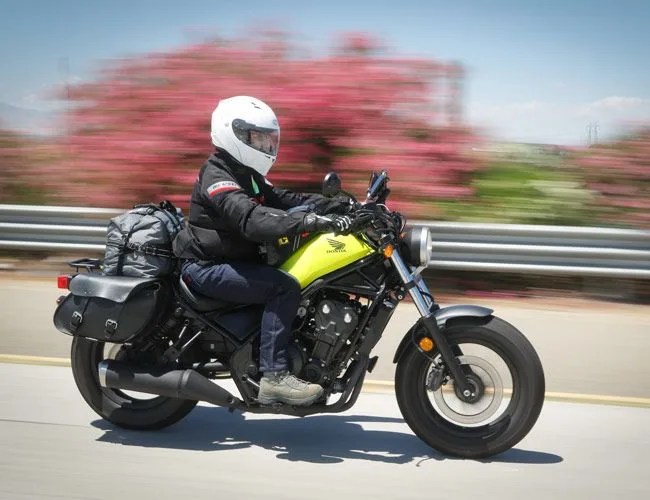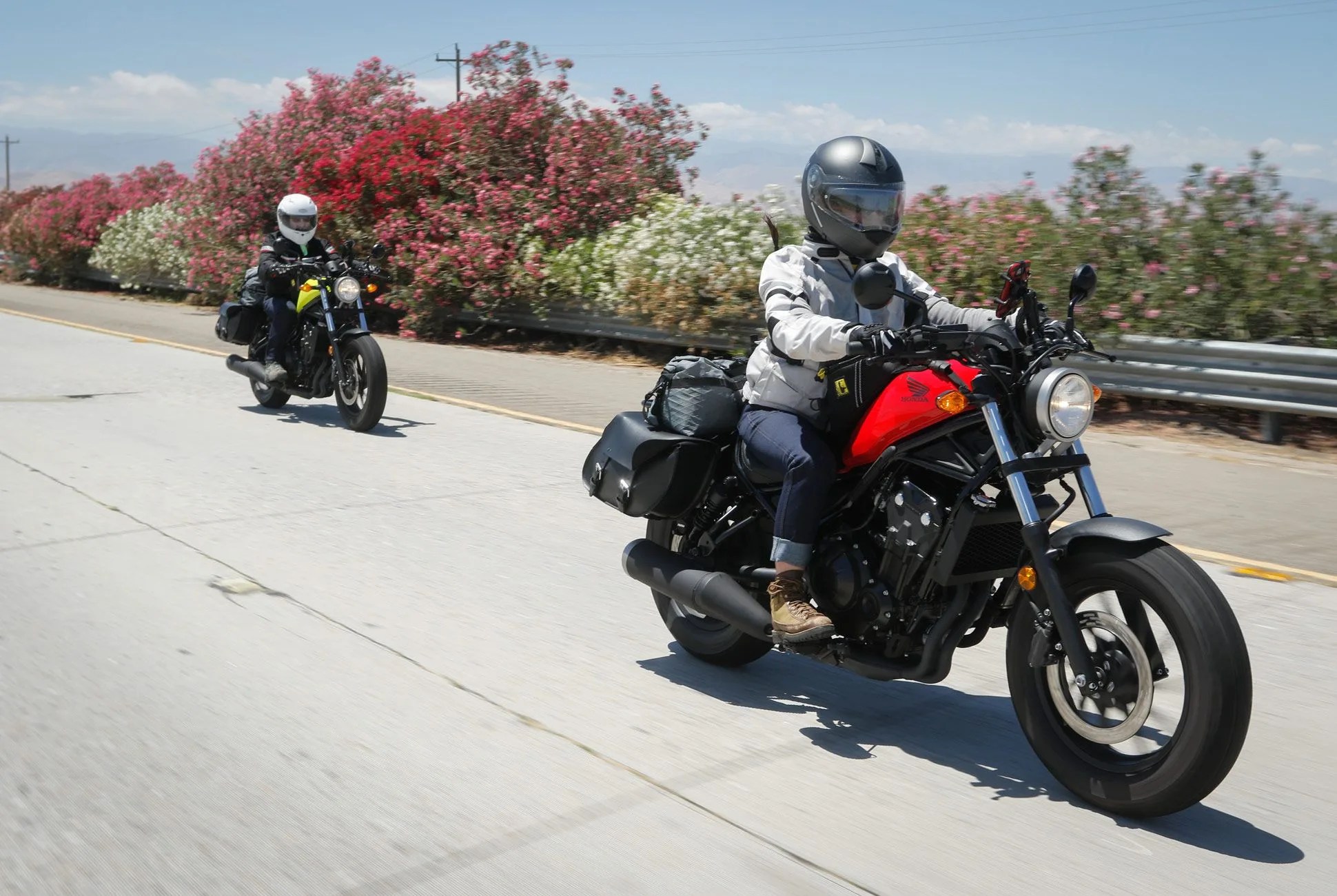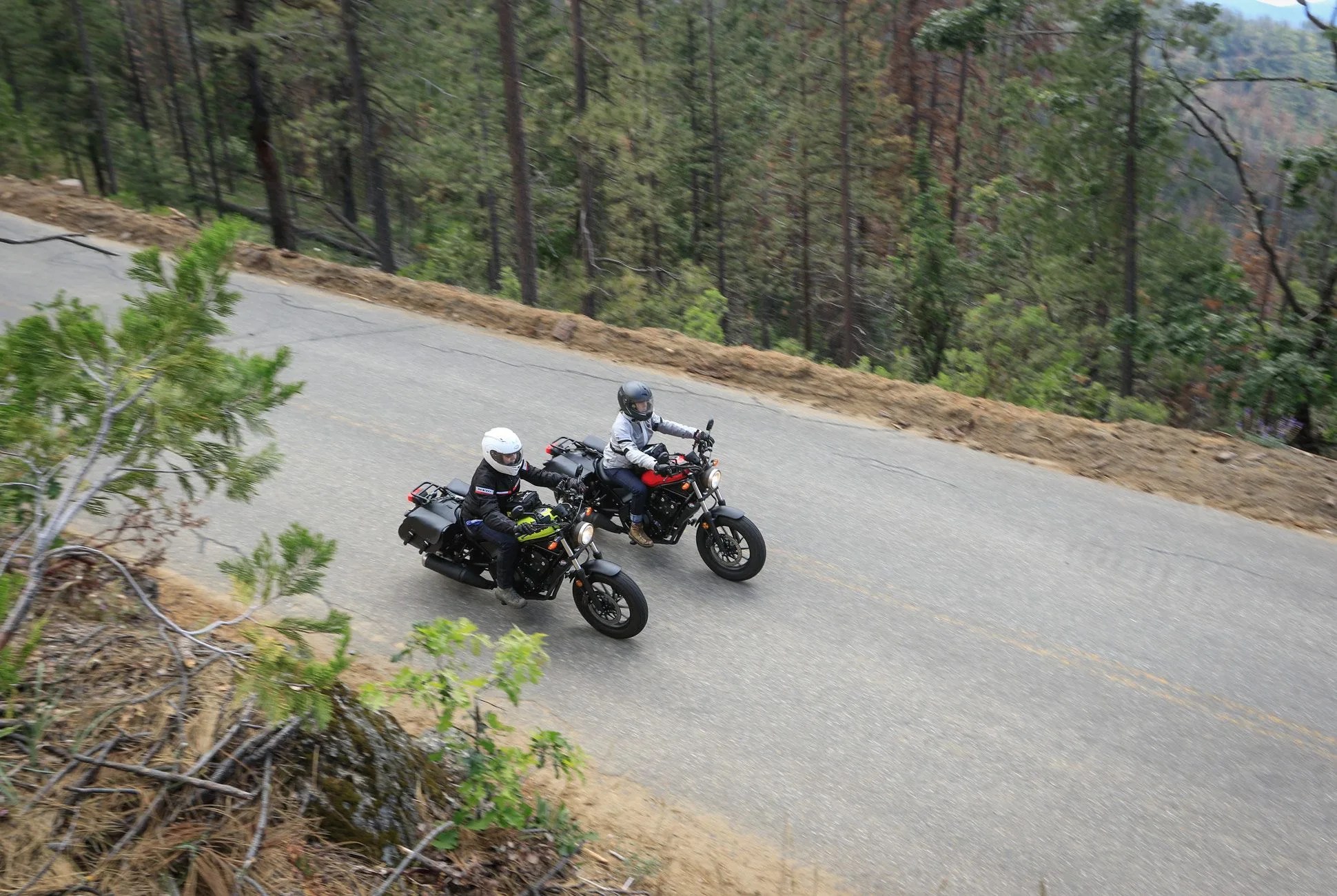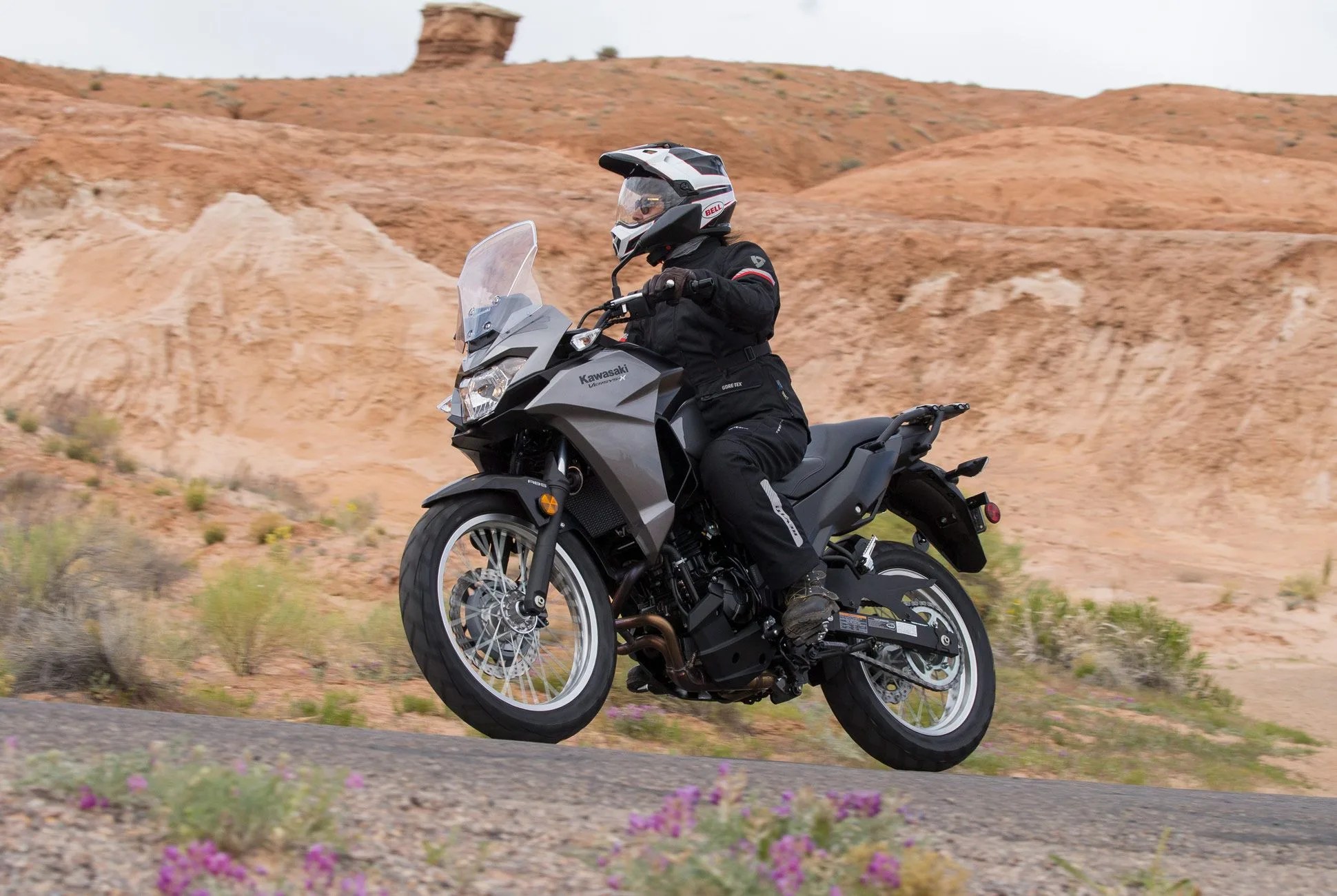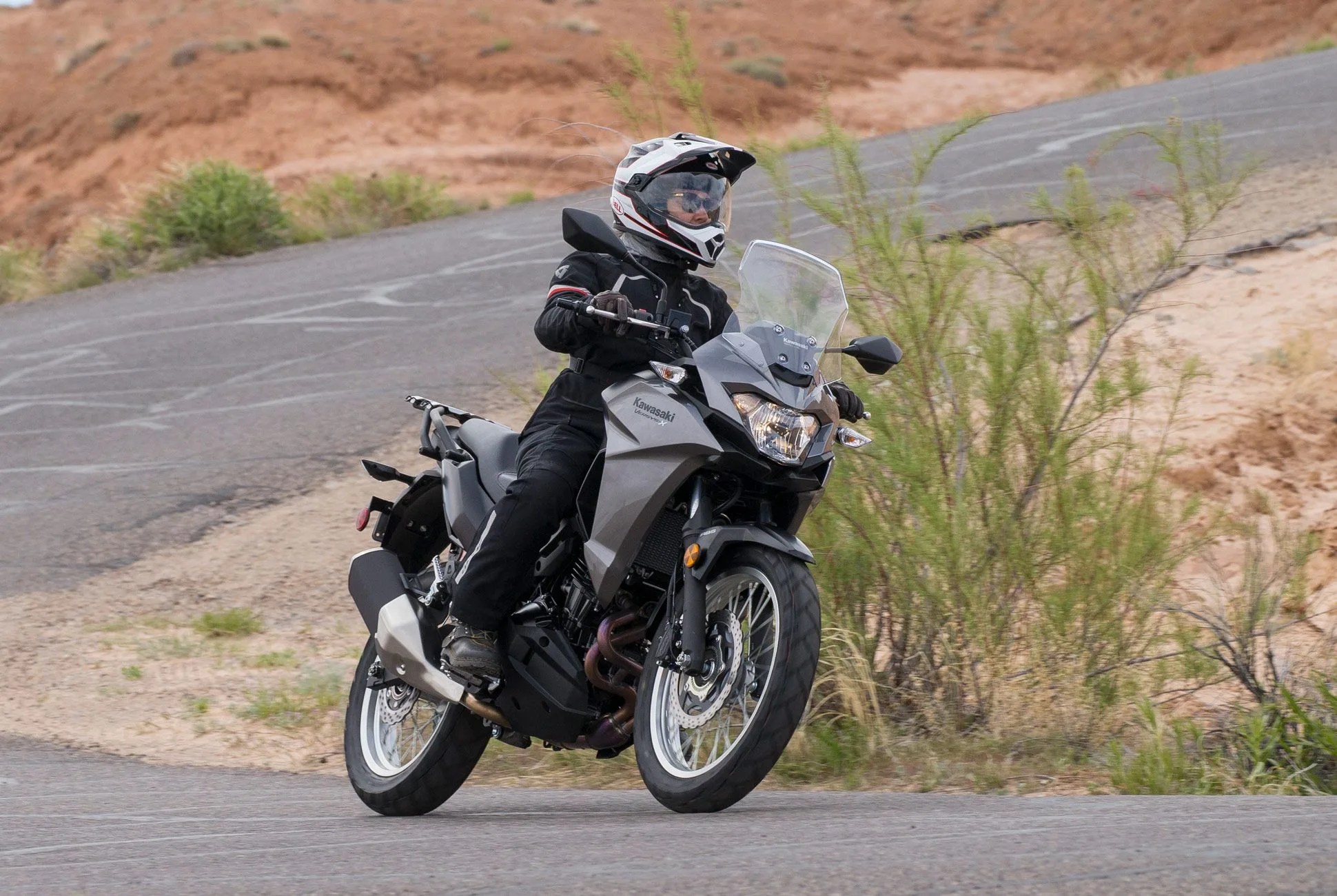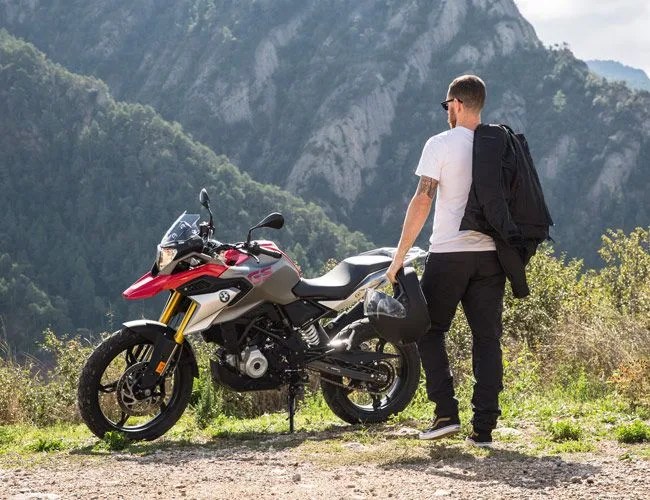7 photos
It seems these days the motorcycle market is responding to an apparently inaudible demand for more compact, manageable and (preferably) more affordable bikes, evidenced by a new crop of small-bore iterations coming from Kawasaki and BMW, and re-releases from Honda, KTM and Suzuki. Even so, a stigma still lingers over the “little,” “starter” or “sub-cc” motorbikes, which I think has well overstayed its welcome. People are apprehensive about choosing a 250cc, 500cc or even 900cc machine to accomplish their two-wheeled aspirations — a cautiousness often based on the completely subjective claims of other riders. I’ve ridden a handful of sub-650cc motorcycles built for varying applications and venturing anywhere from few hundred to many thousands of miles. I’m positive there’s a perfect pint-sized bike (if not multiple options) for each motorcycle category – touring, adventure, dual-purpose and sport – with the ability to meet, if not exceed, those expectations we’ve set for their bigger brethren.
Recently, I rode a new cherry red Honda Rebel 500 up in the Sierra Mountains, down along the coastline and through scorching LA traffic. The bike is actually so new to the market, it seems no one has attempted a long tour on it yet. A few of my friends chuckled when I mentioned my plan to ride a few-hundred-mile trip on what most people consider a beginner bike. They “felt sorry” for my soon-to-be sore ass and feared for my life when I divulged our strategy to navigate through Los Angeles on a weekday, during rush hour. But I’ve been on bikes with much less power, with fewer accessories or modern amenities, and have witnessed them out-perform their larger counterparts.
The smaller Honda’s humble stature surprisingly gave me comfort as I squeezed through narrowing gaps of Interstate traffic. Maybe I wouldn’t have won a race against a full-sized cruiser, but that small four-stroke parallel-twin engine produced enough power to send the featherweight well above the speed limit. The bike’s weight and balance offered more than momentum. It was controllable. Laughably so, in fact. I felt empowered by my dominance of it and reassured by its performance at the same time. At slow speeds and in tight situations, the Rebel is king. When I came to a stop, whether at a light or for a break, I didn’t have to plan my exit strategy. I didn’t have to worry about parking on a hill, backing out of a spot, or steering the bike during a screeching halt. I didn’t have to worry much at all. Because whatever slow-speed challenge I encountered could be overcome by easily mastering the bike and controlling it purely with strength and leverage, yet minimal effort.
And it’s the same story on the Kawasaki Versys-X 300. For years I’ve relied on Yamaha’s XT225 for my dual-sport excursions, but I desired greater distances — more trails and two-track connected by wide stretches of asphalt or gravel or hard-packed dirt. I pined for a real “adventure” model. Something that could handle itself off-pavement, but power through highways with ease. Plus, being able to carry a larger load couldn’t hurt. It took years, but when the Versys-X 300 popped onto the market, I jumped at an opportunity to take it for a thorough spin. The balance of the bike made up for its 32.1-inch seat height (my inseam is 27 inches). And when I finally reached the dirt road I’d been dreading all day, the 300 surprised me. Keeping up with better off-road motorcyclists was, for lack of a better word, possible. The path laid out in front of me was wide, mildly elevated, speckled with bedrock and gravel, cracked around the edges and dusted with a layer of silt. The suspension was kind to my slight frame, and with every mile, my confidence grew.
The point is, you don’t know what suits you until you try it. Or that “big” doesn’t necessarily mean “great,” just like “small” doesn’t necessarily mean “underpowered” or “incapable.” A motorcycle is a tool, a piece of stylized hardware — you just need to know how to use it properly.
A Compact Offering from BMW
